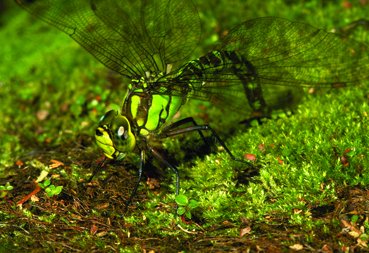articles/Lens/macrostarters-page3
Macro for starters - part 3 of 1 2 3
by Mike McNamee Published 01/06/2002

The Dedicated Macro Lens
The picture shows three optics, the 55mm Micro Nikkor, the 105mm Micro Nikkor and the TC200 Teleconverter. The prime lenses focus all the way down to 1/2x full size and then to 1:1 using the dedicated extension tubes. They are old but still perform wonderfully well, glass does not get tired from taking pictures! Despite their age (circa 1980) they fitted and worked on the latest Nikon D1 digital camera - that's what you call non-obsolescence, something Nikon have always been proud of.
Bellows
At the end of the chain in terms of building up magnification comes a bellows. These are like an infinitely variable extension tube except that they can be 200mm in length to give up to 10x magnification with the right lens. We chose to use a 75mm Enlarging Nikkor. This fits to the PB6 Bellows via a special adapter. We are talking 25-year-old kit here, still bitingly sharp and hitched up to a year-2001 camera. The only compromise we had to make was to add an extension tube to the back so that the big battery bays of both the film F4 and digital D1 cleared the back of the bellows.
One of the longstanding problems of macro was the calculation of exposure, you always had to either use a calculator or a pre calculated table. With a D1 you just shoot then read the histogram and what you see is what you get - what we would have given for this technology in the early eighties when we used to churn our way through £1000 of Polaroid each month?
Some Final Thoughts
We have shown you the full range of close-up equipment but do not want to leave you with the thought that you can only achieve success with a heavy investment. In still life macro the most important thing is what you do with bits of card, silver foil and plasticine, lighting still counts for 80% of the mood of the shot. In the great outdoors, field craft is far more important than fancy cameras. If you are inept at approaching a skittish dragonfly it will not be on its perch when you shoot. It has no respect for the value or modernity of your equipment! Finding ways of keeping still are one of the greatest skills you can acquire. Use every trick in the book from tripods, monopods, canes, windbreaks, laboratory stands and convenient trees. Given half a chance flash will always improve your shot even if it is only to supplement the natural light.
Please Note:
There is more than one page for this Article.
You are currently on page 3 Contact Mike McNamee
1st Published 01/06/2002
last update 09/12/2022 14:56:15
More Lens Articles
There are 0 days to get ready for The Society of Photographers Convention and Trade Show at The Novotel London West, Hammersmith ...
which starts on Wednesday 15th January 2025




